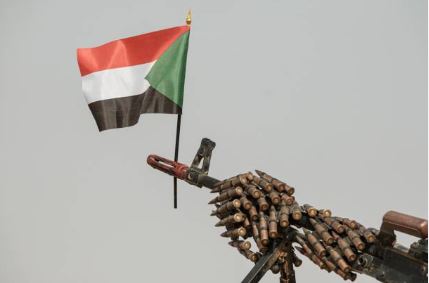The conflict in Sudan is being fueled by a constant flow of weapons into the country, Amnesty International has said on Wednesday.
A press statement by the agency said recently manufactured foreign weapons have been transferred into and around Sudan, often in flagrant breach of the existing Darfur arms embargo.
The statement said Amnesty International found that recently manufactured or recently transferred weapons and ammunition from countries including China, Russia, Serbia, Türkiye, the United Arab Emirates (UAE) and Yemen were being imported in large quantities into Sudan, and then in some cases diverted into Darfur.
On 15 April 2024, the first anniversary of the Sudan conflict, Amnesty International launched a global petition urging the UN Security Council to extend the arms embargo beyond Darfur to the rest of Sudan.
“Our research shows that weapons entering the country have been placed into the hands of combatants who are accused of international humanitarian and human rights law violations. We have methodically tracked a range of lethal weapons – including handguns, shotguns and rifles – that are being used in Sudan by warring forces,” the statement said. “It is clear that the existing arms embargo that currently applies only to Darfur is completely inadequate, and must be updated and extended to cover the whole of Sudan. This humanitarian crisis cannot be ignored. As the threat of famine looms large, the world cannot continue to fail civilians in Sudan,”
Amnesty said that to date, more than 16,650 people have been killed since the escalation in conflict between the Sudanese Armed Forces (SAF) and the Rapid Support Forces (RSF) in April 2023, adding that some of the international humanitarian law violations by parties to the conflict amount to war crimes.
More than 11 million people, reads the statement, are estimated to have been internally displaced and millions others were at immediate risk of famine.
According to the press release, Amnesty International had analyzed more than 1,900 shipment records from two different trade data providers, and reviewed open source and
digital evidence – including approximately 2,000 photos and videos – showing recently manufactured or recently imported weapons in Sudan.
The agency had also interviewed 17 regional arms and Sudan experts between February and March 2024 to corroborate data analysis and investigate weapons supply lines used by various groups.
Fighting erupted in Sudan in April 2023 between the SAF and RSF paramilitaries. Since then, other armed groups and actors have joined the conflict, aligning themselves with either the SAF or the RSF.
The fighting came after months of tensions between the two groups over security force reforms, proposed as part of the negotiations for a new transitional government, among other issues.
The conflict has led to massive civilian displacement, with more than 7.3 million people estimated to have been internally displaced since April 2023 according to the UN. In addition, a further 2.1 million people are estimated to have fled to neighboring Central African Republic, Chad, Egypt, Ethiopia and South Sudan, where they live in dire conditions.




